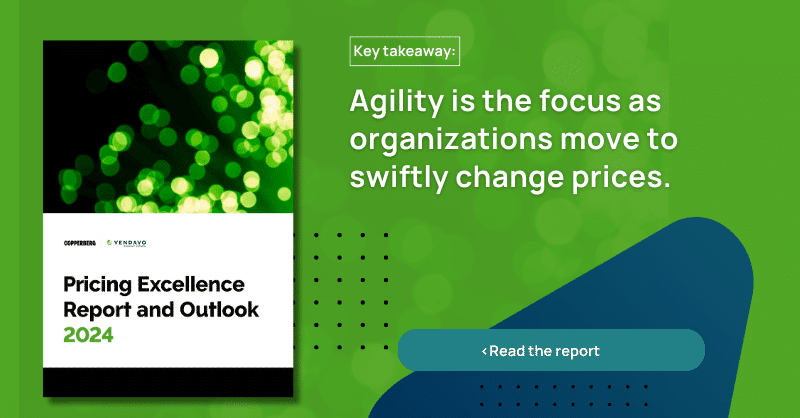

Lehrasib Ali April 14, 2023
Share this article:

Originally Posted: January 25, 2022
Last Updated: April 14, 2023
The price of a product or service is rarely set in stone. Take airfare, for example, where prices can vary widely even though the product itself doesn’t change at all. In this dynamic pricing landscape, businesses can use a variety of pricing strategies to maximize profits and meet customer needs. Keep reading to discover some of the most effective pricing segmentation techniques used by businesses today.
Pundits have tried to analyze pricing as far back (at least!) as Pliny the Elder in Roman times. Even then, it was clear that pricing was mainly dictated by the perceived value of the product being priced.
While companies will choose the pricing of the goods they’re looking to sell, it’s ultimately the customers who have the final say in what a product is really worth to them. In other words, what you’re selling is only worth as much as a customer is willing to pay for it.
For B2B brands, pricing differentiation may be more commonplace. End prices are often negotiated and changed based on a multitude of factors (industry, location, etc) – but this doesn’t make it any easier for pricing teams to maximize opportunities. Setting prices based on an estimated willingness to pay can’t be effective when each different customer has a different perception of value across all the products they buy.
Table of Contents
Simply put, price segmentation, sometimes called price differentiation, is a strategy in which prices are differentiated based on willingness to pay. It is driven by the fact that price sensitivity can vary so much from customer to customer, from product to product, and in all the locations that they use your product.
For example, a building materials distributor sells timber to a wood shelving manufacturer. In this case, the timber makes up a large proportion of the manufacturer’s cost of goods – leading to higher price sensitivity. The same distributor may also sell to a construction company where the timber makes up a lower portion of the cost of goods, typically resulting in lower price sensitivity.
The perceived value of a product will also be influenced by other factors, too, such as timing and market conditions in the given geographic area. B2B sales teams may be more attuned to these dynamic conditions and can use their intuition and experience to maximize results. The challenge arises, however, when sales teams over-rely on this gut feeling to win deals that boost their sales rate more than the bottom line.
Introducing price segmentation should thus be done in a way that complements existing processes, working to fine-tune the sales team’s gut feelings rather than work against them. Technology is the way forward for this. Data-driven price optimizer software gives teams the edge with much more precise predictions for price setting for each segment. Leveraging this alongside the on-the-ground experience of a sales team allows companies to extract much more value from each deal.
Read A Case for Price Segmentation and Value over Volume
Price segmentation is critical for businesses looking to optimize their revenue, satisfy their customers, and gain a competitive edge. By pricing products or services differently for different customer segments, companies can charge customers based on their willingness to pay and offer discounts to those who are more price-sensitive. This not only maximizes revenue but also increases customer satisfaction and loyalty.
With price segmentation, businesses can even capture a larger market share by targeting specific customer segments that competitors may be neglecting. It’s a win-win situation that can help avoid price wars and enhance brand image, while allowing companies to better understand their customers and allocate resources more efficiently.

In practice, the best strategy is one that combines the power of pricing optimization technology with sound business judgment and human expertise. Leveraging historical data helps with identifying segments based on past behaviors or attributes. Here are some common types of price segmentation to consider:
Volume-based pricing segmentation involves pricing based on how much of a certain product or service is being sold. Typical deals tend to involve a customer purchasing a certain number of items to access a specified discount or a reward. This is widely used by subscription services looking to lock in customers for longer.
The price of a product can change significantly, depending on when that product was purchased. You may charge different prices for the same product or service based on the time of day, day of the week, or season of the purchase. For example, you may consider offering lower prices during off-peak hours to encourage more customers to visit and higher prices during peak hours or during the holiday season.
Next, you may consider charging different prices for the same product or service based on the sales channel. There may be discrepancies in the perceived value of a product when viewed online, versus in-store.
Another type of pricing segmentation is value-based pricing. In this case you would price based on the perceived value of the product or service to the customer. For example, luxury brands may charge higher prices for their products because they are perceived as having a higher value to customers.
You may consider charging different prices for the same product or service based on the location of the customer. For example, a business may charge higher prices for customers in affluent areas or charge lower prices in areas with more price-sensitive customers.
Sometimes you may consider charging different prices for the same product or service based on demographic factors like age, income, or education level. For example, you may offer discounted prices to senior citizens or students.
There are a number of other types of segmented pricing including psychographic, behavioral, product bundling, product features, and more.
To put this into practice, consider which attributes already exist in your historic sales data, then infuse human insight to generate more nuanced views on customer behavior. This way, you can avoid the trap of over-segmentation (where too much granularity muddies the waters) or too little segmentation where prices are set too broadly as a result.
Segmented pricing is not a new concept, and you’ve probably encountered it more times than you realize. From software pricing to airline tickets, there are countless examples of price segmentation in our everyday lives. Here are a few real-life examples that you may have encountered:
Price segmentation can be simple enough to implement, it’s just a case of understanding pricing mechanisms, and knowing how to segment the market you’re looking to sell to. The big point to understand is that price segmentation requires company-wide understanding. Guidance should come from the top in regards to establishing and communicating processes to the price-setters and sales teams.
Four primary conditions must be satisfied to implement segmented pricing:
Pricing mechanisms can be used to help match your products or services with customers, for the price they’re willing to pay. If your pricing is flexible, you’ll be able to entice a greater number of customers through deals and discounts that make your product more accessible to them. Dynamic market conditions require agility in how you use pricing to communicate value to your customers.
The first step in achieving effective price segmentation is understanding your prospective buyers. You’ll need to be able to separate potential buyers into groups, based on similarities in their perceived value of your product. With enterprise-level solutions, these customer groups and product families can serve as attributes for more granular segmentation – for prices that are dynamically appropriate for meaningful product-customer intersections to match willingness to pay.
While pricing segmentation can yield significant benefits in terms of increased sales and customer satisfaction, it is crucial to ensure that the costs associated with the segmentation do not outweigh the potential profits. This includes the costs of implementing and maintaining the price segmentation strategy, including marketing and sales expenses, as well as any additional operational costs. Failing to strike a balance between segmentation costs and profitability can lead to a negative impact on the bottom line.
It is important to note that there are legal implications to price segmentation, and unlawful segmentation practices can result in significant fines and reputational damage. It is important to ensure that the price segmentation strategy is compliant with all relevant laws and regulations to avoid any legal or financial repercussions.

Building a price segmentation strategy can be a challenging task, but with the right approach, it can deliver significant benefits for businesses. Here are some steps businesses can take to create an effective pricing segmentation strategy:
Price segmentation has numerous advantages for businesses, here are some key benefits:
While price segmentation offers several advantages, businesses should also be aware of some potential disadvantages including:
Price segmentation may sound like a no-brainer, and for many companies it is. But that doesn’t mean that things can’t go wrong.
If pricing segmentation is implemented without pre-thought, businesses risk sub-optimal results. Price dilution and stagnation can occur when price segmentation strategies aren’t fully understood or regularly reviewed. Guidance should come from the top in regards to establishing and communicating processes to the price-setters and sales teams.
Thankfully, companies now have a wealth of information available to help inform their price segments. The key is understanding that this isn’t a one-size-fits-all process.
Companies need to find the right granularity, and that’s why data is so vital for providing unbiased context for pricing strategies. Without historical transaction data and analytics, businesses will inevitably fall back on guesswork to determine their pricing. Finding nuance to create highly accurate segments then relies on blending human expertise with enormously detailed data sets, allowing businesses to reap the rewards of a finely-tuned pricing strategy.
It’s a challenge a modern B2B enterprise can only address by using advanced technology. At Vendavo, our AI-embedded pricing solutions are designed to maximize sales potential, by optimizing pricing and sales to achieve reliable and enormously profitable outcomes.
Price segmentation is a powerful tool that you can use to maximize revenue, improve customer satisfaction, and gain a competitive edge. By understanding the different segments of your customer base and tailoring your pricing strategy accordingly, you can offer customers the right product at the right price, ultimately driving more sales and boosting your bottom line.
